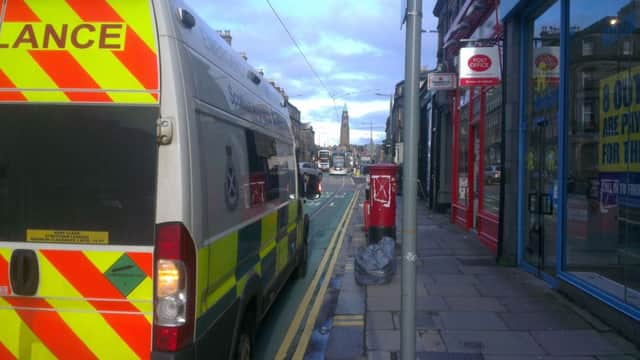Thousands of ambulances sent to wrong addresses


Details obtained by The Scotsman show that since 2009-10 more than 2,800 ambulances have been dispatched to the incorrect address.
Hundreds were “Category A” calls – the designation given to the most serious, life-threatening incidents.
Advertisement
Hide AdAdvertisement
Hide AdSince April, more than 300 ambulances have been dispatched to the wrong address for calls including suspected heart attacks, suicide attempts and patients falling into a diabetic coma.
The ambulance service said the errors were due to callers providing insufficient information, not response vehicles going to the wrong address.
But the figures led to calls for improvements to be made in the way 999 calls are handled by dispatchers.
Recent calls include one in July when a patient in Edinburgh was reported to be vomiting and suffering chest pains. The call was prioritised as Category A, but the ambulance arrived at the wrong address.
The information, released following a Freedom of Information request, gives no indication what happened to the patient.
CONNECT WITH THE SCOTSMAN
• Subscribe to our daily newsletter (requires registration) and get the latest news, sport and business headlines delivered to your inbox every morning
In March, a patient in Glasgow was reported to have inhaled hazardous chemicals and was having difficulty speaking, but the responding ambulance went to the wrong location. And in November a call was received that a person was drowning following a diving accident. Again, call handlers took insufficient information and the ambulance was sent to the wrong place.
Scottish Conservative health spokesman Jackson Carlaw said: “There is always a risk of ambulances showing up at the wrong place for a variety of reasons including sketchy details being given by the caller. However, it’s clear this is happening too often, and we should never stop looking for ways to improve on this.”
Advertisement
Hide AdAdvertisement
Hide AdA Scottish Ambulance Service spokesman said the overall number of mistakes was very small. He said: “The number of cases where there is not enough location information provided by callers is around 0.1 per cent of the 2.5 million incidents responded to in the last five years. Call takers are trained to elicit as much location information as possible from callers.”
In October, the ambulance service was forced to apologise after an Inverness control room staff member sent a vehicle to Great Western Road, Aberdeen, after an elderly man suffered injuries on a street of the same name in Kirkwall, Orkney.
Eight ambulance control rooms across Scotland were merged into three in 2003 and Scotland’s police and fire boards have recently approved plans to reduce their number of control rooms in a move aimed at saving £74 million by 2026.
Following the phased closures, Motherwell and Govan will form a west area control centre for the police, with Bilston Glen near Edinburgh given responsibility for the east command area and Dundee the north area command.
Campaigners have warned that difficulties understanding northern dialects and local geography will put lives at risk.
SCOTSMAN TABLET AND IPHONE APPS